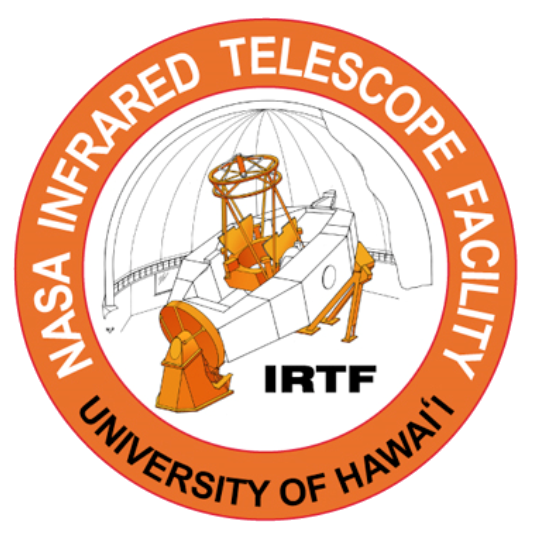IRTF Data Reduction Resources
SpeX
Spectra taken in all observing modes of the pre-upgraded SpeX and the upgraded SpeX can be reduced with the well-tested, interactive program Spextool. The current version is 4.1 (version 5 is meant only for iSHELL, see below). It works in the IDL environment. All users should read Sections 1 and 2 of the manual (found in Spextool/manuals/) before attempting to run the software. A gzipped tar file uSpeXdata.tar.gz containing raw SXD+LXD_Long SpeX data can be used to test drive the downloaded Spextool package. Comments, suggestions for improvements, and bug reports should be directed to Mike Cushing at michael.cushing _at_ gmail _dot_ com.
As of May 2019, automated 'Quicklook' SpeX data reduction is running during ongoing observations. This allows for (near-)real-time inspection of the data quality. For more information, see here.
iSHELL
iSHELL spectra can be reduced with version 5 of Spextool, which is only meant
for iSHELL data reduction, not SpeX.
Download:
- Spextool version 5.0.3 (released 24/Feb/2020; allows Lp4 reduction, various bug fixes, improved description extraction parameters in manual)
- K3 test data (optional; released 09/Oct/2017)
- Lp3 test data (optional; released 09/Oct/2017)
- iSHELL data reduction manual (located in instruments/ishell/manual/ in SpeXtool tar file)
- iSHELL calibration line atlas
Important Release Notes:
Please read section 3.2 in the manual (located in Spextool/instruments/ishell/manual/ of the unpacked tar file) for additional IDL libraries that need to be installed.
Spextool is an IDL-based data reduction package that was originally written to reduce SpeX data. With the release of version 5, iSHELL data can be reduced. This version *cannot* reduce SpeX data. The capability will be added soon. Until that time, SpeX users must continue to use v4.1 (see above) to reduce their data. SpeX users who use Spextool for the reduction of their data will find the new version familiar, but there are enough changes to the GUIs and code that we ask that all users read the manual (in Spextool/manuals/) to learn how to reduce iSHELL data. If the users wish to practice, they can download test data for the iSHELL configurations K3 and Lp3. One major difference between reduction of SpeX and iSHELL data is in the telluric correction process. A Vega model is used to remove the intrinsic spectral energy distribution of the A0 V standard star and the SpeX version of the code allows the user to adjust the equivalent widths of the hydrogen lines in the Vega model to match that of the A0 V standard star. However the wavelength range of iSHELL orders is so small that the hydrogen lines span at minimum two orders and thus the code cannot adjust the equivalent width of the hydrogen lines. Users should therefore be aware that there may be residuals in the final telluric-corrected spectra due to the mismatch in equivalent widths between the A0 V standard star and the Vega model. Finally, we note that a large amount of new code was required to make Spextool compatible with iSHELL. While we have done our best to beta test the code in all 16 observing modes, there will no doubt be bugs and problems until the code is put through its paces by users. Therefore please do not hesitate to contact both Mike Cushing (michael.cushing _at_ gmail _dot_ com) and Adwin Boogert (aboogert _at_ hawaii _dot_ edu) with any problems that might arise including anything that simply *seems* wrong. If you would like to be included on a mailing list to be notified when a new version is available, please email Mike and Adwin as well.
Atmospheric absorption correction using models (major upgrade Sept/2024):
We are developing software to correct atmospheric absorption in iSHELL spectra using models, eliminating or reducing the time needed for observing standard stars. A Beta version of the program Xtellcor_model is currently available. It uses models from the Planetary Spectrum Generator (PSG; Villanueva et al. 2018) that are accessed online, and thus the user does not need to compile atmospheric modeling software nor line lists on their local computer. The atmospheric models typically need to be optimized to the observing conditions by scaling the molecular columns, in particular that of H2O. Therefore, the method works best for studies of line to continuum ratios and if individual sky lines can be discerned. It performs less well for weak continuum targets with strong emission lines or if absolute flux calibration is required. In September 2024 a major updgrade was made available, running faster, allowing for more user interaction, and with much improved blaze shape correction using template spectra (the flat field method was dropped). Please note that this is still a Beta release and observers should keep observing standard stars until they are comfortable with the quality of the atmospheric correction using models. We welcome feedback: Adwin Boogert (aboogert _at_ hawaii _dot_ edu).
Xtellcor_model runs as part of the Spextool package, but currently must be installed separately using the tar file given below. Please follow the Cookbook in section 2 of the manual for installation and usage instructions. The tar file also includes test data:
Xtellcor_model tar file (Beta release; 12/Sep/24 version 0.0.6 major upgrade)
Xtellcor_model manual (version 6; 23/Jan/2025)
Empirical blaze function database Here you can download the empirical blaze functions that Xtellcor_model (optionally) uses to divide out the iSHELL order curvatures.
iSHELL Quicklook Data Reduction:
As of January 2020, automated 'Quicklook' iSHELL data reduction is running during ongoing observations. This allows for (near-)real-time inspection of the data quality. For more information, see here.
Remote Access to IRTF Data Reduction Software
IRTF offers the possibility of remote data reduction, e.g., for those observers without an IDL license at their home institution. IRTF's standalone workstation Freia is set up for this, and can be accessed via VNC. Freia comes with IDL, and Spextool for SpeX and iSHELL installed. Observers can request a time-limited account on Freia for their Spex and iSHELL data reduction. For more information, see here.
MIRSI
Photometry with MIRSI data is described in mirsi_stepts.txt and these IDL library files are needed.
Apogee Camera
The data reduction for the (no longer offered) Apogee camera is described in apogee_steps.txt, and it requires these IDL library files.
Other Relevant Data Reduction Resources
IDL
- Where to get IDL
- GSFC IDL Astronomy Users Library
- GSFC Links to Many Astronomy and IDL related sites
- Coyote's Guide to IDL Programming (download Coyote Library)
- IDL Newsgroup
Calibration Stars
Other
- IRSA Finder Charts (which sources are in the slit?)
- IRAF
- JPL Horizons
- Simbad


